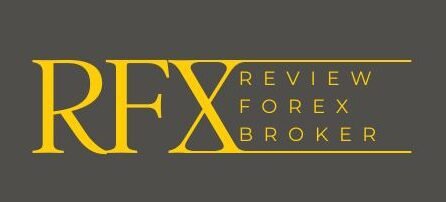Forex trading, or foreign exchange trading, has a rich history that spans centuries. From its humble beginnings in ancient trade practices to the sophisticated, technology-driven markets of today, Forex trading has evolved significantly. Understanding this evolution provides valuable insights into the modern Forex market and helps traders appreciate the context of their current strategies. This blog explores the evolution of Forex trading, highlighting key milestones and technological advancements that have shaped the market.
1. Ancient Currency Exchange
Origins of Currency Exchange:
- Barter System: In ancient civilizations, trade was primarily conducted through bartering goods and services. As societies grew more complex, the limitations of bartering became apparent, leading to the development of money as a medium of exchange.
- Early Currency Systems: Ancient Mesopotamia, Egypt, and China were among the first to use currency for trade. Coins made of precious metals like gold and silver became widely accepted as a form of payment.
Early Currency Exchange Practices:
- Merchant Practices: Traders and merchants in ancient civilizations began exchanging different currencies to facilitate international trade. This informal currency exchange was a precursor to modern Forex trading.
2. The Birth of Modern Forex Trading
Gold Standard Era:
- Introduction of the Gold Standard: In the 19th century, the gold standard was established, where currencies were pegged to a specific amount of gold. This system aimed to stabilize currency values and facilitate international trade.
- Currency Pegs: The gold standard led to fixed exchange rates between currencies. Central banks and governments managed currency values based on gold reserves, creating a more structured form of currency exchange.
Post-War Changes:
- Bretton Woods Agreement (1944): After World War II, the Bretton Woods Agreement established a new international monetary system. Currencies were pegged to the U.S. dollar, which was convertible to gold. This system aimed to promote economic stability and growth.
3. The Advent of Floating Exchange Rates
End of the Bretton Woods System:
- Nixon Shock (1971): In 1971, President Richard Nixon announced the suspension of the U.S. dollar’s convertibility into gold, leading to the collapse of the Bretton Woods system. This event marked the transition from fixed exchange rates to floating exchange rates.
- Free-Floating Currencies: Under the new system, currencies began to fluctuate based on supply and demand, market speculation, and economic conditions. This shift allowed for greater flexibility in currency values but also introduced increased volatility.
4. The Rise of Electronic Trading
Early Electronic Trading:
- Introduction of Electronic Systems: The 1980s and 1990s saw the development of electronic trading systems, which revolutionized Forex trading. These systems allowed traders to execute trades electronically rather than through traditional phone-based methods.
- The Role of Computers: Computers and algorithms began to play a significant role in trading, providing traders with advanced tools for analysis and execution.
Online Trading Platforms:
- Emergence of Online Platforms: The late 1990s and early 2000s witnessed the rise of online Forex trading platforms, enabling retail traders to access the Forex market from their computers. Platforms like MetaTrader 4 (MT4) became popular, offering user-friendly interfaces and comprehensive trading features.
- Increased Accessibility: Online platforms democratized Forex trading, making it accessible to individual traders worldwide. The ability to trade 24/5 and access real-time market data transformed the Forex landscape.
5. The Impact of Mobile Technology
Mobile Trading Revolution:
- Rise of Mobile Apps: The proliferation of smartphones and mobile apps in the 2010s allowed traders to access Forex markets on the go. Mobile trading apps offered real-time updates, charting tools, and order execution capabilities from anywhere.
- Enhanced Flexibility: Mobile technology provided traders with greater flexibility and convenience, enabling them to manage their trades and monitor markets even when away from their computers.
Social Trading and Copy Trading:
- Introduction of Social Trading: Social trading platforms, such as eToro, emerged, allowing traders to share strategies and insights. Social trading enabled less experienced traders to follow and copy the trades of successful investors.
- Crowdsourced Insights: Social trading platforms facilitated the exchange of information and ideas, fostering a collaborative trading environment and enhancing market participation.
6. The Future of Forex Trading
Advancements in Technology:
- Artificial Intelligence and Machine Learning: The integration of AI and machine learning is transforming Forex trading by providing advanced predictive analytics, automated trading strategies, and enhanced risk management tools.
- Blockchain and Cryptocurrencies: The rise of blockchain technology and cryptocurrencies is introducing new opportunities and challenges in Forex trading. Cryptocurrencies offer alternative trading assets, while blockchain technology promises increased transparency and security in trading transactions.
Regulatory Developments:
- Increased Regulation: As Forex trading continues to grow, regulatory authorities are implementing stricter regulations to protect traders and ensure market integrity. Regulations focus on broker transparency, trading practices, and investor protection.
Enhanced Trading Tools:
- Algorithmic Trading: The use of sophisticated algorithms and high-frequency trading (HFT) strategies is becoming more prevalent. These tools enable traders to execute trades with precision and speed, leveraging complex data analysis and automated decision-making.
Conclusion
The evolution of Forex trading reflects broader changes in economic systems, technological advancements, and market dynamics. From ancient currency exchange practices to modern electronic trading platforms, the Forex market has continually adapted to meet the needs of traders and investors. As technology continues to advance and new trading tools emerge, the Forex market will undoubtedly evolve further, offering new opportunities and challenges for traders worldwide. Understanding this evolution helps traders appreciate the current state of the market and navigate its future developments with greater insight. Happy trading!

